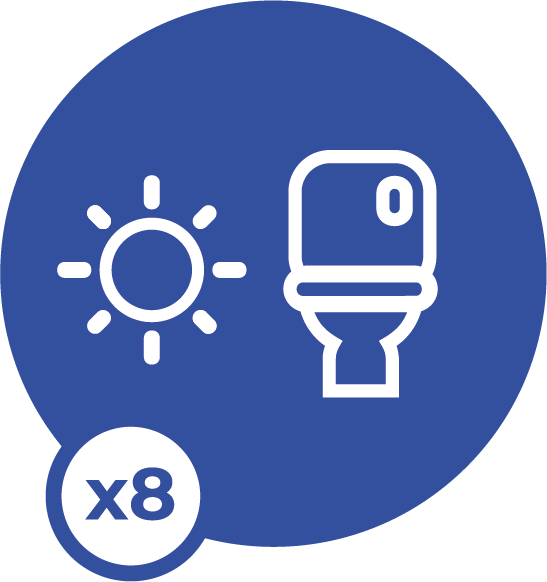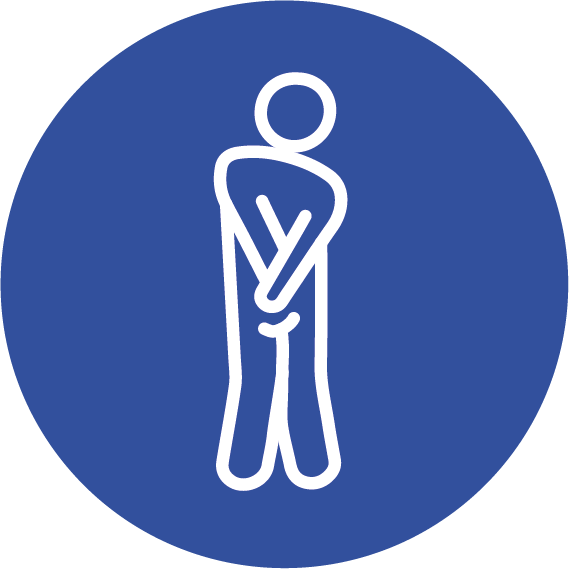
Recognising an overactive bladder
How does the bladder work?
The bladder is a reservoir filled with the urine produced by the kidneys. Once the bladder is full, this information goes to the brain and you feel the “need to urinate”. The bladder is therefore controlled by the brain.
Receptors located in the bladder wall tell the brain when it needs to act. The brain sends a message to the bladder muscle to ask it either to expand (to store the urine) or to contract (to expel the urine).
What is overactive bladder?
Overactive bladder is a clinical syndrome characterised by involuntary muscle contractions of the bladder that create a sudden and irrepressible need to urinate in some people. This disfunctioning of the bladder can occur at any time of day.
Symptoms
The overactive bladder is defined as a urinary urgency, generally associated with the manifestation of one or more of the following symptoms:

Urgenturia

Pollakiuria

Nycturia

Urge incontinence
This syndrome has a very great impact on the quality of life of the people affected. Their days are marked by embarrassing situations and their nights are broken.
It affects men and women of all ages. Studies show that 15% of the population are affected by this syndrome, and a tendency is observed for it to increase with age. 30% to 40% of people aged over 75 years are affected.
It is important to tell your general practitioner at the first signs. They can support you and direct you to a specialist who will decide whether nerve stimulation of the posterior tibial nerve with Tensi+ is a suitable treatment for you.
The treatments

The hygiene/dietary rules
The first advice given by the doctor is to follow hygiene/dietary rules: lose weight, stop smoking, reduce consumption of tea, herbal infusions, coffee, while limiting the consumption of drinks to 1–1.5 l/d.
Behavioural measures
It is important to get involved in the management of your disease. Doctors recommend pelvic floor exercises, give advice to regulate urination times and often ask people suffering from overactive bladder to keep a urination diary.
Perineal physiotherapy
Re-education enables leaks to be reduced when the perineal muscles are not contracting well. Strengthening these muscles does in fact play a part in reducing the bladder contraction reflex.
.jpg)
Transcutaneous electrical nerve stimulation (TENS) of the posterior tibial nerve
Stimulation of the posterior tibial nerve enables action to be taken to control the urination reflex. With the help of Tensi+, patients will treat their overactive bladder to regain control of their bladder.
Drugs
Drug treatment blocks the action of receptors in the bladder detrusor muscle and avoids unintentional contraction.
Last treatment options
injections of botulinum toxin, sacral neuromodulation and surgery are invasive treatments considered if the above therapies fail.
Sources :
- 1Haab F. et al. Terminologie des troubles fonctionnels du bas appareil urinaire : adaptation française de la terminologie de l’International Continence Society. Prog Urol 2004;14:1103-11.
- 2Agence Nationale d’Accréditation et d’Evaluation en Santé (ANAES). Recommandations pour la pratique clinique. Prise en charge de l’incontinence urinaire de la femme en médecine générale. Saint-Denis La Plaine ; ANAES : 2003.
